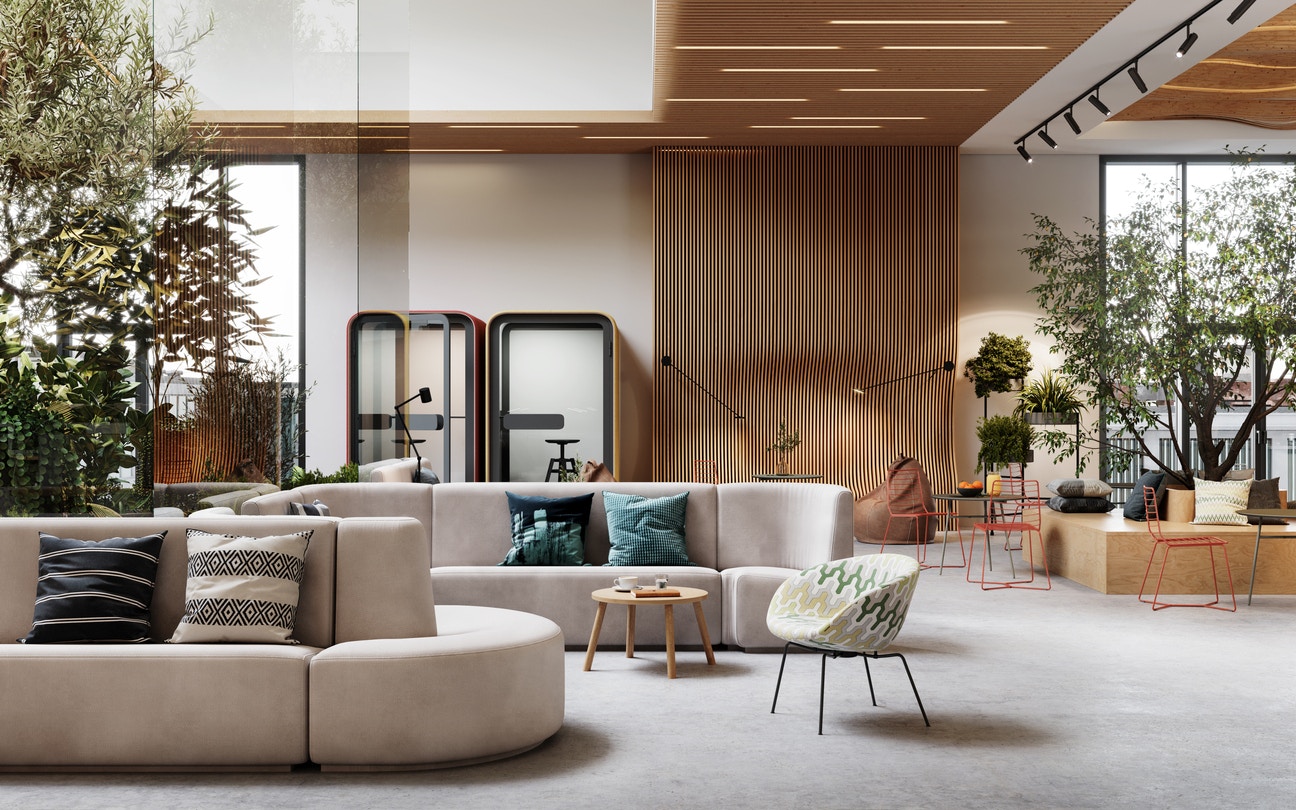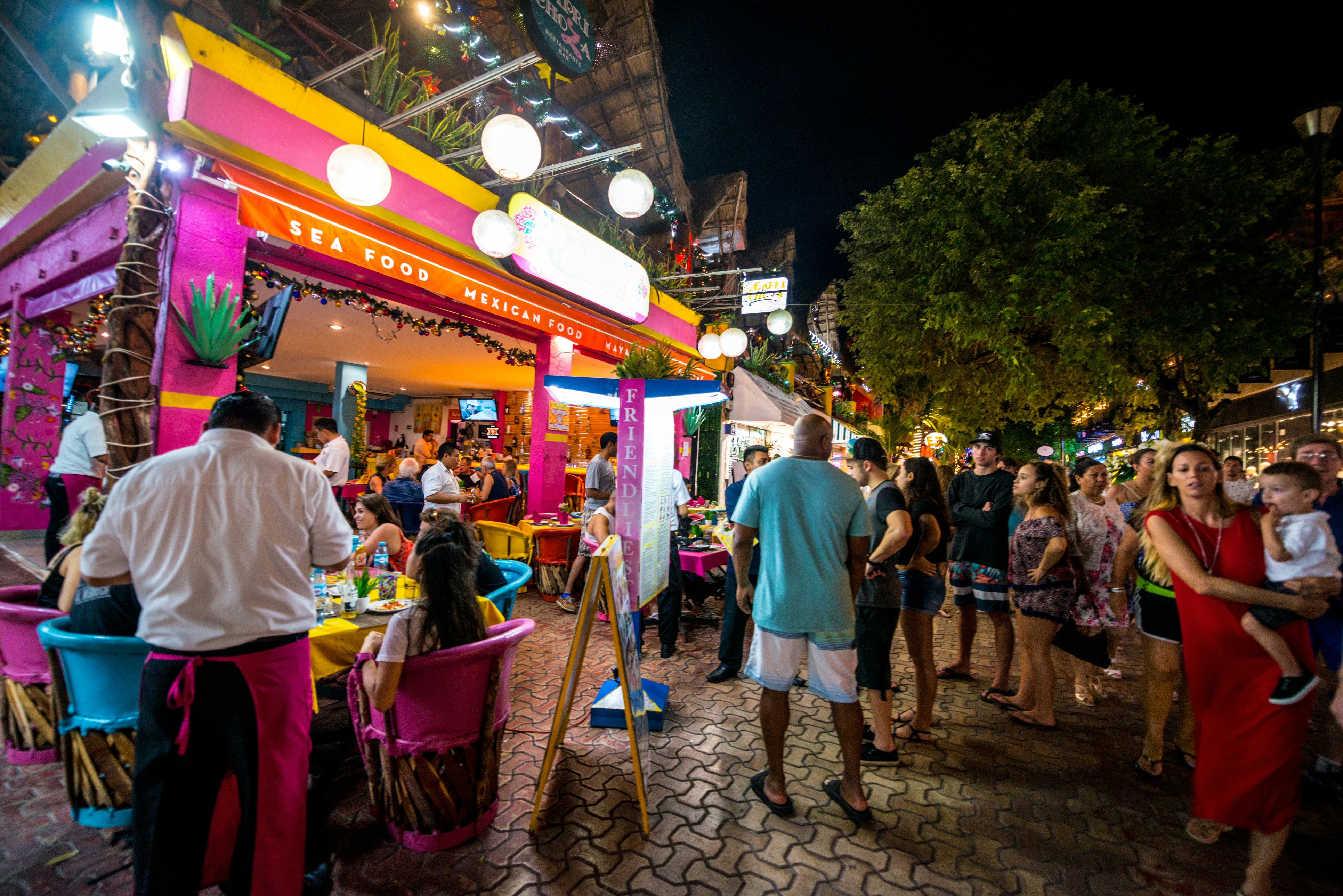Blog
AV Installation Tips for Restaurants

Creating the perfect atmosphere in a restaurant goes beyond exceptional food and service. The right audiovisual (AV) setup plays a crucial role in shaping the ambiance, influencing customer satisfaction, and even boosting sales. As our AV experts at Soundtrack can attest, well-designed AV systems are essential for creating an inviting and memorable dining experience.
With over a decade of experience, Soundtrack has partnered with thousands of businesses to help align their sound and ambiance. Drawing on our extensive expertise, this article delves into practical AV installation tips tailored specifically for restaurants. Whether you're opening a new establishment or upgrading your existing setup, these tips will guide you toward achieving the perfect balance of sound and visuals.
Restaurant revenue statistics show that sales increase 9.1% with the right background music, but can drop 4.3% with the “wrong” music. And the sound quality is a factor. This guide will help you choose the right commercial AV system so that your great music selections can have an impact on your restaurant’s sales.
Posted on 15. Januar 2025
Understanding the Role of AV in Restaurants
Before diving into the technical aspects of AV installation, it’s important to understand why it matters. Restaurants aren’t just places to eat; they’re environments where guests connect, relax, and celebrate.
The right audio-video system can:
Enhance the atmosphere: Background music and visuals contribute to the restaurant’s mood, whether it’s a casual café or a fine dining establishment.
Improve customer experience: Clear audio ensures announcements, specials, or music playlists are heard without being overpowering.
Drive engagement: Visual elements such as screens, video walls, or projectors can be used for events, sports broadcasts, or digital menus.
Boost brand identity: Consistent sound and visuals reinforce your brand’s personality and values.
AV Installation Tips for Restaurants
When installing a restaurant AV system, here are 10 things to remember.
1. Define Your Goals
Start by identifying what you want your audiovisual system to achieve.
Consider:
Type of music: Will you play soft jazz, lively pop, or custom playlists? Think about how music influences the overall vibe of your establishment. For example, upbeat pop music can energize a casual dining space, while classical music might set the tone for an elegant fine dining experience. Soundtrack offers 1,300 ad-free playlists that you can edit, and Soundtrack’s AI Playlist Creator can generate custom playlists in seconds.
Visual needs: Do you require screens for sports, digital signage, or decorative visuals? For example, a sports bar benefits from multiple high-definition TV screens, while a café may need a single display for a rotating menu or promotional videos.
Customer experience: How will the AV system interact with the layout and flow of the restaurant? Take into account how the physical space, such as seating arrangements and open kitchen designs, might affect sound and visual placement.
Defining these goals helps you choose the right equipment and configuration to align with your vision. For instance, a bustling sports bar may prioritize screen visibility and surround sound, while a fine dining restaurant might focus on subtle, high-quality audio.
2. Choose High-Quality Equipment
Investing in reliable, high-quality AV equipment ensures long-term performance and minimizes maintenance.
Focus on:
Speakers: Opt for a commercial-grade speaker system designed for even sound distribution. Commercial audio distribution systems are built to withstand the wear and tear of a high-traffic environment, ensuring durability and consistent performance. For example, Bose Professional or Axis speakers are popular choices in the restaurant industry.
Amplifiers: Match amplifiers with your speaker’s power needs for optimal performance. Poorly matched systems can lead to subpar sound quality and increased strain on restaurant audio equipment. For example, UniFi and WiiM offer premium amplifiers that deliver great sound and can satisfy other networking needs as needed. As official Soundtrack partners, both offer direct integrations with our platform.
Visual displays: Use screens with high resolution and brightness to accommodate different lighting conditions. For outdoor dining spaces, weatherproof displays are a must to ensure functionality in varying conditions.
Soundtrack’s expertise emphasizes the importance of compatibility and scalability, so your system can grow with your needs. A restaurant may start with a basic setup and later expand to include more screens or advanced sound systems as it grows in popularity.
3. Plan the Speaker Layout
The placement of speakers is critical for even sound distribution.
Here are some tips:
Avoid overlapping sound zones: Ensure each area of your restaurant has a distinct sound profile without overlap. For instance, bar areas might require more robust audio than quieter dining sections.
Balance volume levels: Guests in different areas should experience consistent sound levels, whether seated near or far from speakers. This ensures that no one feels overwhelmed or excluded from the ambiance.
Consider ceiling height: Ceiling-mounted speakers are ideal for uniform sound coverage. If ceilings are too high, consider wall-mounted options to keep sound at ear level for better clarity.
For instance, a large open-plan restaurant may benefit from strategically placed speakers to avoid creating dead spots or areas with excessive volume. In contrast, smaller spaces might rely on fewer speakers, carefully positioned to maximize sound distribution.
4. Optimize Acoustics
Restaurant acoustics significantly impact sound quality. Poor acoustics can lead to echoes, muffled audio, or overwhelming noise levels.
To optimize:
Use acoustic panels: Install panels to absorb excess noise and improve sound clarity. These panels can be customized to blend with the restaurant’s decor, maintaining aesthetic appeal while enhancing functionality.
Incorporate soft furnishings: Carpets, curtains, and cushioned seating help reduce echo. These elements not only contribute to better acoustics but also enhance the overall comfort and style of the space.
Conduct sound tests: Evaluate the space with different audio levels to fine-tune your setup. Testing during peak hours provides the most accurate representation of how your system will perform under normal conditions.
An example of successful acoustic management can be seen in high-end steakhouses, where sound-absorbing materials maintain an intimate atmosphere even during busy hours.
5. Integrate Audio with Lighting
Synchronizing audio and lighting creates a cohesive ambiance.
For example:
Dim lights during evening hours: Pair with soft, low-tempo music for a relaxed vibe. This combination encourages longer stays and increased spending.
Highlight key areas: Use spotlights or accent lighting to draw attention to screens or stages. These focal points can create a more engaging environment, especially during live events or themed nights.
Smart lighting systems can automate these transitions, ensuring consistency without manual intervention. For instance, Philips Hue systems allow seamless integration with audio systems for dynamic ambiance changes.
6. Ensure Accessibility and Ease of Use
Your AV system should be user-friendly for staff to operate.
Consider:
Centralized control: Use a single interface to manage sound, visuals, and lighting. Centralized control systems reduce the risk of errors and simplify training for staff members.
Preset modes: Program different settings for lunch, dinner, and special events. This can include variations in volume, lighting intensity, and playlist selection tailored to the time of day or specific occasions.
Training for staff: Provide training to ensure smooth operation and quick troubleshooting. Knowledgeable staff can address issues promptly, minimizing disruptions to service.
Imagine a manager needing to lower music volume during a live event—a centralized system ensures quick adjustments without disrupting the flow of service. Providing intuitive training materials, such as quick-reference guides, further empowers your team.
7. Plan for Future Scalability
Restaurants evolve over time, so design your AV system with scalability in mind.
Features to prioritize include:
Modular components: Systems that allow easy upgrades or expansions. This flexibility accommodates changes such as adding more speakers or upgrading display screens.
Wireless technology: Reduce wiring complexities and facilitate future additions. Wireless systems are particularly useful for seasonal or temporary dining areas, such as outdoor patios.
Cloud integration: Streamline updates and remote management. For instance, cloud-based playlist management allows you to adjust music selections across multiple locations from a single dashboard.
For example, a growing chain of restaurants can remotely update playlists or screen content across multiple locations with a cloud-based system. This level of control enhances consistency and reduces operational headaches.
8. Comply with Licensing and Regulations
Using music in a commercial setting requires appropriate licensing to avoid legal issues. Performance rights organizations (PROs) like ASCAP, BMI, SESAC, and GMR provide licenses for public performance. Soundtrack’s experience with licensing ensures restaurants avoid costly pitfalls while maintaining compliance.
Licensing compliance is especially important during high-profile events, where unlicensed use of music could result in fines or legal action. Partnering with experts helps navigate these complexities. For more on this topic, check out our guide on restaurant music licensing.
9. Test and Calibrate Your System
After installation, thorough testing is crucial.
Steps include:
Check sound levels: Ensure consistent audio levels across all areas. This process involves measuring decibel levels to maintain a comfortable volume.
Inspect visual quality: Verify screen clarity and alignment. High-definition content loses impact if displays are poorly aligned or improperly configured.
Simulate real scenarios: Test the system during peak hours to identify potential issues. This ensures that your setup can handle the demands of a bustling environment.
A comprehensive test might involve simulating a busy Saturday night to ensure the AV system performs flawlessly under real-world conditions. Stress testing should be included to identify vulnerabilities in the system.
10. Schedule Regular Maintenance
Routine maintenance extends the lifespan of your AV equipment.
Best practices include:
Regular cleaning: Prevent dust and debris from affecting performance. Schedule cleaning during off-hours to avoid disrupting operations.
Software updates: Keep systems updated to enhance functionality and security. Regular updates ensure compatibility with new AV technology solutions and features.
Professional AV inspections: Partner with experts like Soundtrack for annual checkups. These inspections identify potential issues before they escalate, saving time and money in the long run.
Tailoring AV to Your Restaurant Type
Different types of restaurants require unique AV setups. Here are some considerations based on your establishment:
Fine Dining
Discreet speakers: Blend seamlessly with the decor.
Low-tempo music: Foster a calm and elegant atmosphere.
Soft lighting: Create a luxurious and intimate setting.
Casual Dining
Dynamic playlists: Mix genres to appeal to diverse audiences.
Interactive displays: Highlight specials or promotions.
Zoned sound: Adjust music levels based on seating areas.
Sports Bars
High-definition screens: Ensure visibility from all angles.
Surround sound: Amplify the excitement of live games.
Adjustable audio: Prioritize commentary during events and music during downtime.
Cafés and Bakeries
Compact speakers: Provide subtle background music.
Warm lighting: Enhance the cozy ambiance.
Playlist variety: Rotate music to match different times of the day.
Advanced Tips and Best Practices
Here are six things to consider if you want to take your restaurant AV system to the next level.
1. Leverage Smart Technology
Incorporating smart AV solutions can elevate your restaurant’s efficiency and customer experience. Features such as voice-controlled systems, automated playlists, and adaptive sound levels based on noise sensors ensure your AV setup remains modern and effective.
2. Engage Guests with Interactive Features
Interactive screens or tablet-based menus allow guests to engage more actively with your restaurant. Highlighting promotions, taking orders, or even offering entertainment options during the wait time can significantly enhance the dining experience.
3. Customize Soundtracks for Different Times
Curating different playlists for breakfast, lunch, and dinner ensures your restaurant maintains the right ambiance throughout the day. This can be achieved by using AI-based music services, such as Soundtrack’s AI Playlist Creator, to adapt to crowd preferences.
4. Monitor Customer Feedback
Regularly gathering customer feedback about the AV system can help identify areas for improvement. Online reviews and in-person suggestions provide valuable insights into how well your AV setup meets guest expectations.
5. Incorporate Seasonal Themes
Update your AV system to align with seasonal events or holidays. For example, festive playlists during the holiday season or themed visuals for Valentine’s Day can make your restaurant more inviting and memorable.
6. Collaborate with Experts
Partnering with industry professionals like Soundtrack ensures a seamless AV installation process. Their tailored advice and technical expertise help create systems that not only meet but exceed your goals.
How Soundtrack Can Help
A well-designed AV system is an investment in your restaurant’s success. By enhancing ambiance, improving customer experience, and reinforcing your brand identity, the right AV setup can make all the difference. With over 10 years of experience and a deep understanding of AV needs, Soundtrack is your trusted partner in achieving the perfect balance of quality sound and visuals.
Whether it’s a fine dining establishment with a romantic atmosphere or a lively sports bar, these tips provide a foundation for tailoring your AV installation to your unique vision. Partner with experts like Soundtrack to bring your restaurant’s ambiance to life and leave a lasting impression on your guests.
Our sales team can connect you with one of our AV partners to help you design the perfect AV solution using Soundtrack.
Verwandte Beiträge

Musiklizenz für Restaurants: Alles, was Sie wissen müssen

5 einfache und effektive Musiktipps für einen besseren Black Friday

Die 9 besten Hintergrundmusik-Playlists für Wartezimmer

Heben Sie Ihre Musik-Playlist für mexikanische Restaurants auf ein neues Niveau

Das neue In-Store Messaging: So hat Uniqlo seine Kundenkommunikation im Geschäft verbessert.

So lizenzierst du Musik für dein Unternehmen: Leitfaden mit allen Schritten